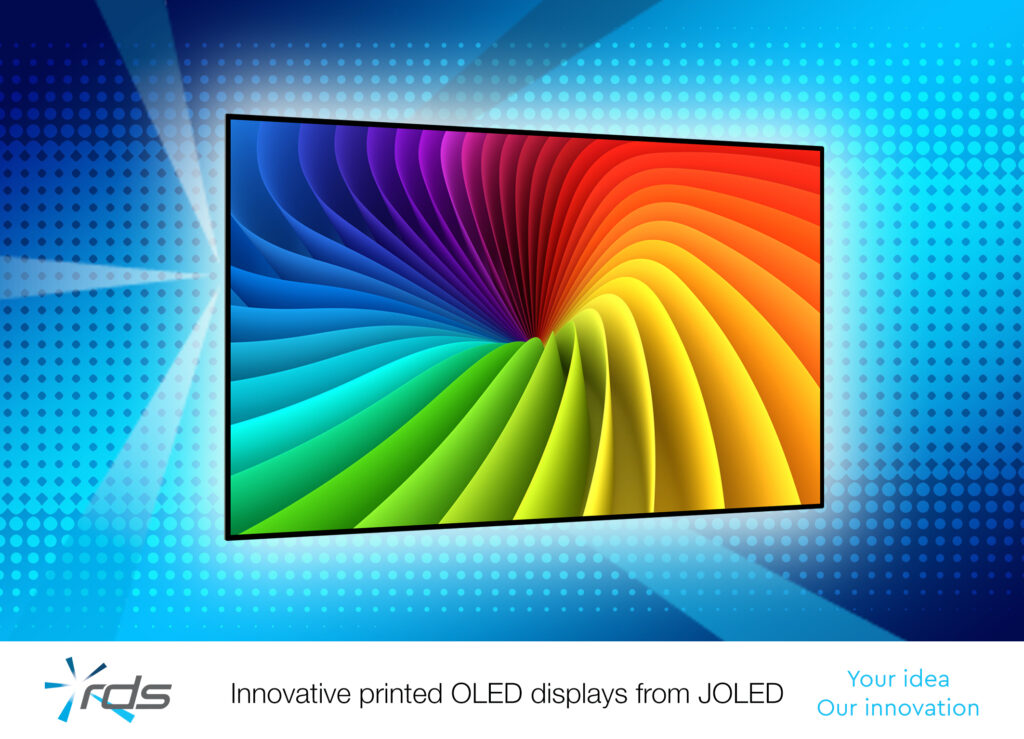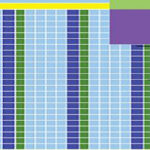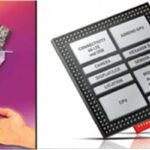 Review Display Systems Inc. (RDS) has announced the availability of high-performance, medium-size OLED (organic light-emitting diode) displays from Japan-based display supplier JOLED. Employing innovative printed OLED technology, JOLED displays deliver outstanding optical performance and offer superb blur-free image quality when displaying fast-moving video sequences.
Review Display Systems Inc. (RDS) has announced the availability of high-performance, medium-size OLED (organic light-emitting diode) displays from Japan-based display supplier JOLED. Employing innovative printed OLED technology, JOLED displays deliver outstanding optical performance and offer superb blur-free image quality when displaying fast-moving video sequences.
The latest printed OLED display technology from JOLED offers leading benefits, such as exceptionally thin and lightweight display panels, enhanced colors, wide viewing angles, up to 4K (3840 x 2160 pixel) resolution, and nearly infinite contrast ratios. There are three medium-sized OLED panels currently available including 22”, 27”, and 32” all featuring 4K resolution and an embedded DisplayPort (eDP) data interface. Also under development is a 14.0” FHD (1920 x 1080 pixel) panel.
In comparison with existing LCD display modules, printed OLED panels provide significant performance advantages in terms of contrast ratio, color gamut, response time, and luminance characteristics. Leading features of JOLED displays include:
High contrast – contrast ratios of 1,000,000:1 enable highly saturated, deep, dark blacks and brighter whites at all viewing angles.
Enhanced color – a color gamut of 138% (sRGB) delivers high color saturation and accurate color reproduction enabling superb image quality with 10-bit color depth.
Energy-efficient – OLED is a self-illuminating emissive display technology – each individual picture element (pixel) can be switched on/off – no backlight is needed.
Ultra-thin and lightweight – display thickness is just 1.3mm due to the simple, effective panel structure, the 32” display panel weighs just 1kg.
Fast response time – typically 0.1mS, significantly faster than typical TFT LCD.
User friendly – up to 40% reduction in blue light emission.
JOLED was established in January 2015, combining the OLED display development divisions of Sony and Panasonic, with the goal of developing and commercializing high-performance printed OLED displays. The ground-breaking printing process developed by JOLED applies and forms OLED materials by using specialist printing techniques. This effective and efficient production process enables flexibility to produce diverse screen sizes and represents a major step forward in OLED display mass production.
RDS has recently signed a distribution agreement with JOLED to market and supply JOLED display panels. Typical applications for medium-size OLED displays from JOLED include medical monitoring equipment, professional audiovisual, in-flight entertainment systems, high-end monitors, and in-vehicle displays.





Omitted power pull of panel per size of the eDP OLED vs LCD
This important parameter is not addressed?